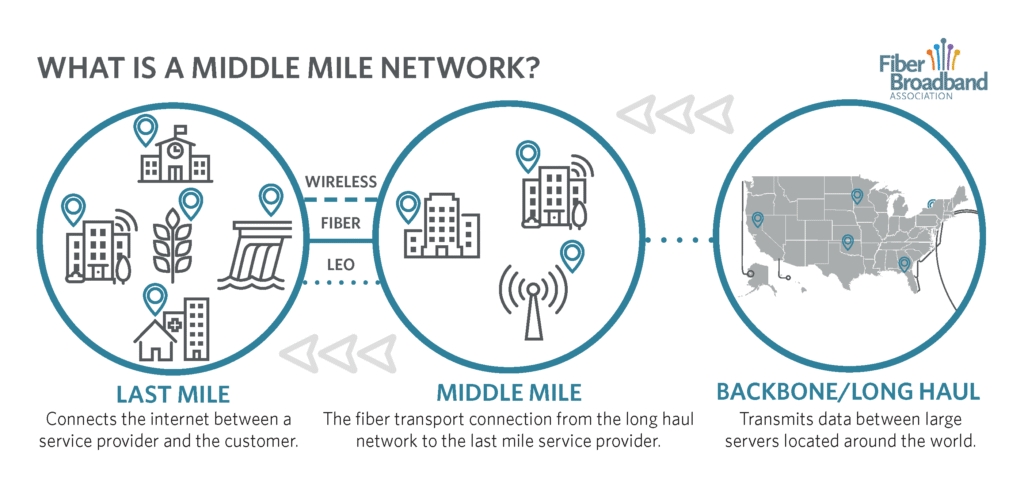Bridging the Gap: Why Congress Must Invest in Middle Mile Broadband Networks
What Are Middle Mile Networks?
Middle Mile networks form the critical link between the internet backbone and the last-mile providers that deliver service directly to homes and businesses. While they don’t connect end users themselves, they are essential to ensuring affordable, fast, and reliable broadband access—especially in rural and underserved areas.

The Challenge in Rural America
In much of rural America, Middle Mile infrastructure is sparse or non-existent, creating bottlenecks with serious consequences:
-
High Costs – Without affordable Middle Mile access, last-mile providers face higher transport costs, which are passed on to consumers.
-
Poor Performance – Limited Middle Mile routes force data traffic to detour hundreds of miles, driving up latency and reducing speeds for businesses, healthcare, and education.
-
The Next Digital Divide – Last-mile deployment alone is not enough. Without investment in Middle Mile infrastructure, rural communities risk being left behind.
Closing the Gap: Policy & Investment Priorities
Targeted federal action can change this story:
-
Fund Middle Mile Deployment – Expand programs like the NTIA’s Middle Mile Grant Program and prioritize Middle Mile in future infrastructure bills.
-
Coordinate with States – Encourage statewide broadband plans that include Middle Mile planning, “Dig Once” policies, and open access models.
-
Prioritize Resilience & Redundancy – Ensure federally funded builds include redundancy and shared Middle Mile corridors, and consider subsea routes for additional resiliency and lower latency.
Why It Matters
Investing in Middle Mile networks delivers benefits across the nation:
-
Lower broadband costs for consumers and ISPs.
-
Better support for telehealth, remote learning, and precision agriculture.
-
Increased connectivity for edge computing and AI data centers.
-
Stronger competition and growth opportunities for local ISPs.
-
A truly connected America—urban and rural alike.